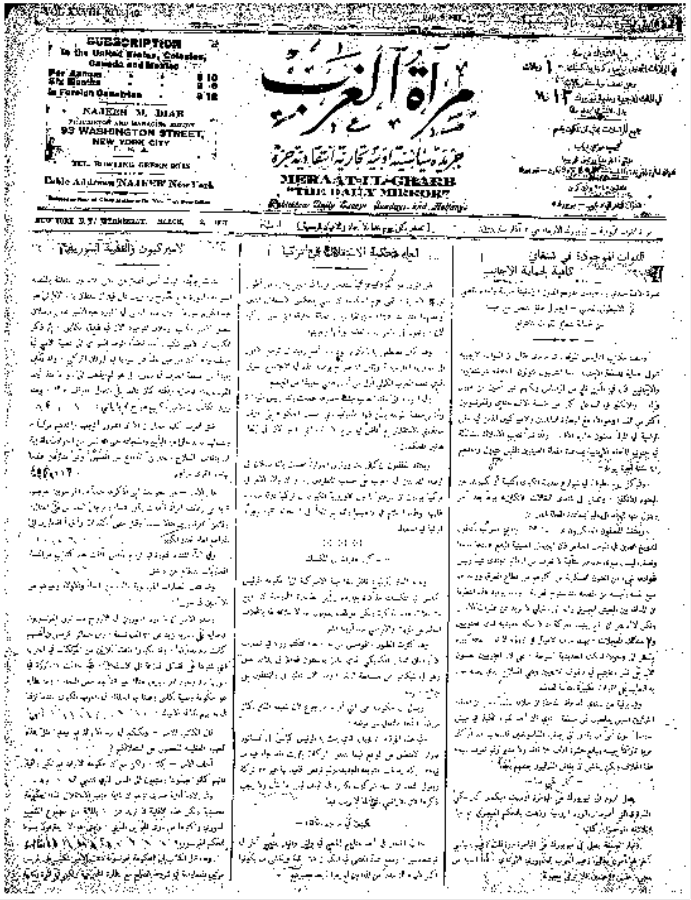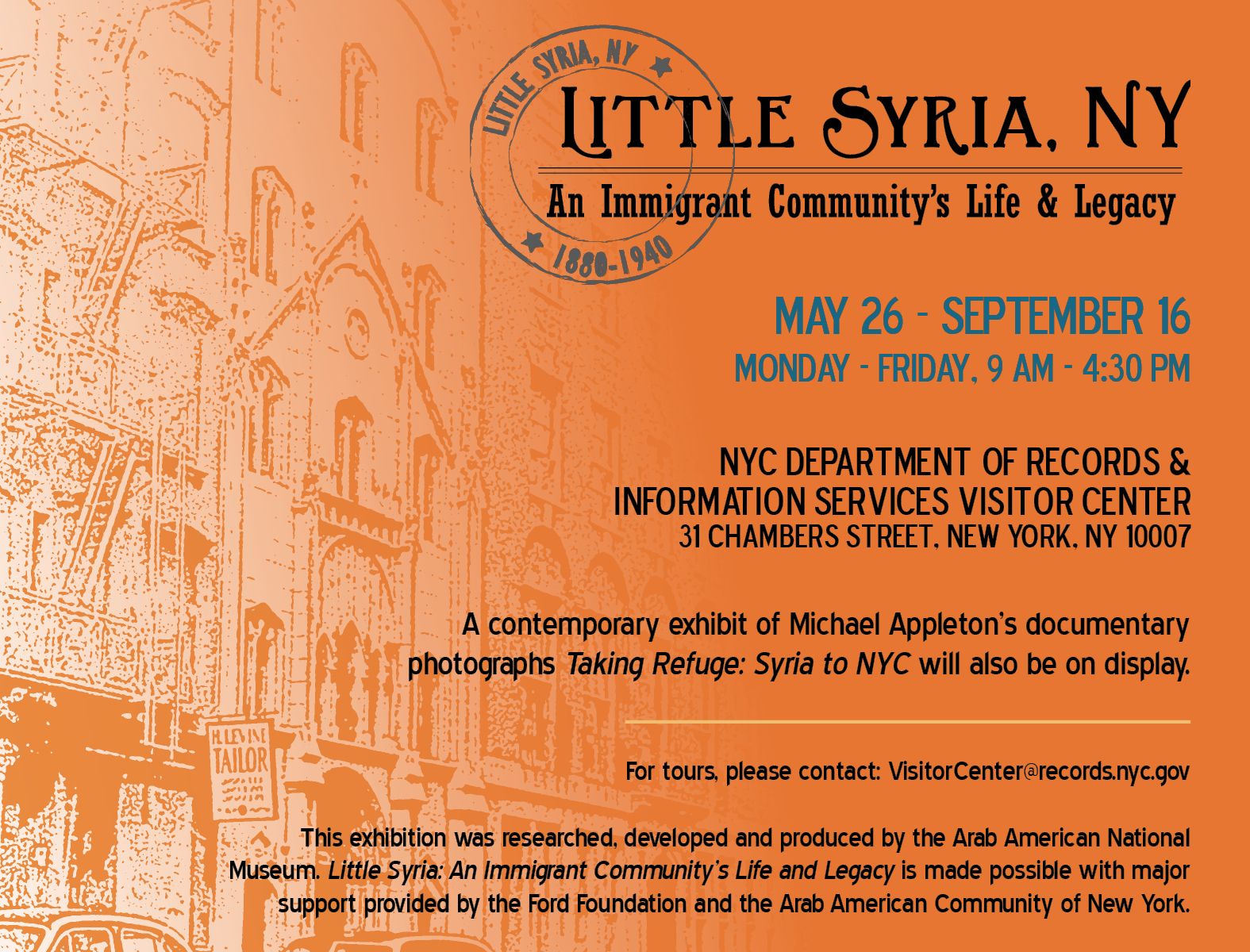Last Chance to Catch NYC's Holiday Notalgia Train
We met the voices of the NYC subway on our nostalgia ride this weekend!


By Abdessamad Kharmaj
Community Organizer at the NYC Department of Records
Arabic newspapers in the United States played a significant role in shaping the life, culture, politics and history of Arab Americans as well as residents of countries in the Middle East. Beginning in the 1880s, the first waves of the Syrians started to hit the shores of New York City. These new immigrants settled on the lower west side and established an Arabic community in a neighborhood which would be soon known as “Little Syria,” or “the Syrian Quarter.” Little Syria in New York City was, for more than five decades, home to a vibrant Arabic community brimming with energy and productivity.
In order to serve the needs of the Arabic community in Little Syria and other parts of the United States, Syrian immigrants established Arabic newspapers in the United States only a few years after their arrival. Founded and edited by Naoum Anthony Mokarzel in 1898 in Philadelphia, Al-Hoda (the Guidance) is considered to be the first daily Arabic newspaper in the United States. Mokarzel was a well-known writer in Mount of Lebanon. His nationalistic articles during the Ottoman oppression forced him to move to the United States where he enjoyed the freedom of speech that was not available in his homeland.
After five years of serving the small Arabic community in Philadelphia, Mokarzel decided to bring more energy to “Al-Hoda” by moving to Little Syria in 1903. The move was considered a big step toward increasing the popularity of “Al-Hoda” within the vibrant Arabic community in New York City.
 Image courtesy of New York City Department of Records
Image courtesy of New York City Department of Records
Al-Hoda was not only the first Arabic newspaper in the U.S. but the leading one in terms of sales. It was an eight page newspaper written in the pure Arabic language. The newspaper owned its own building, linotype machine and other equipment. Mokarzel set the tone of the paper. From the early publications, the paper considered fighting Ottoman control over Lebanon and Syria as its main goal.
Articles often criticized the Ottoman oppression against the Arabs, particularly Christian Arabs. During the early 20th century, Al-Hoda strongly supported the French interference in Syria and Lebanon. It stated, “The Syrians and Lebanese have chosen France as their advisor and guide.” This shows the newspaper’s clear support for the French presence in the region.
Along with Al-Hoda, Meraat-Ul-Gharb (the Mirror of the West) is another example of a successful Arabic newspaper in the United States during the early 20th century. Founded in 1899 by Najeeb Diab, a Lebanese immigrant from Mount Lebanon, Meraat-Ul-Gharb quickly achieved a wide readership among Arab readers in the States and abroad. By the year 1911, Meraat-Ul-Gharb was considered “the best Arabic Newspaper” published in the United States. The paper circulated in New York City, and was also published in other American and Canadian cities. Copies of the paper managed their way back to homeland Lebanon.
The paper only used the purest Arabic in its columns. Occasionally, scientific expressions which are absolutely untranslatable into Arabic were set in English characters. The critical tone of the paper against the Ottomans was set by its founder Najib Diab, who was an activist for Arab freedom from Turkish control. Like Al-Hoda, Meraat-Ul-Gharb often criticized the Turks for their harsh policies toward Arabs and Arab Christians in particular.
Prior to the Great Depression, newspapers like Al-Hoda, Meraat-Ul-Gharb, As-Sayeh (“The Pilgrim” 1912), As Sameer (“The Entertainer” 1926), and Al Bayan (“The Explanation” 1910), flourished and attracted the work of Arabic intellectuals. Gibran Khalil Gibran, Ameen Rihani, Mikhail Naimy, and Elia Abu Madi often contributed their essays, articles, and poems to the papers. These Syrian intellectuals, who worked under “The Pen League,” were well-known in America and throughout the world.
The Arabic newspapers during that time were more than a source of news. These papers played a significant role in educating and empowering the community in Little Syria as well as other parts of the country. Articles often encouraged the Syrians to enroll in English classes, engage in the political life of the United States, and keep themselves united. For more than five decades, dozens of Arabic newspapers and magazines were published in the United States. While some disappeared from the scene quickly, other newspapers remain influential all the way to the 1940’s. Newspapers are only a small part of the legacy of the Arab Americans in New York City, a legacy that started in Little Syria and spread all over the United States.

Learn more about daily life in Little Syria at the new exhibit described above, Little Syria: An Immigrant Community’s Life and Legacy.
Next, read Little Syria: Manhattan’s Lost Neighborhood and The Ghosts of Newspapers Past: 15 Former Locations of NYC Newspaper Headquarters.
Subscribe to our newsletter